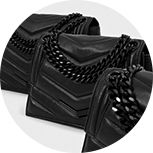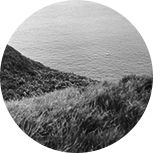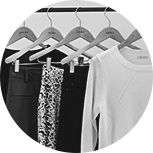
our undertakings with regards Leather
find out more

Since 2019, we have been committed to making IKKS a sustainable brand which acts consciously and responsibly from design to production. In a context where the fashion industry must change, we believe it’s time to reimagine our business by taking a regenerative and circular approach by producing in a more responsible way.
Every day we pay special attention to how each of our materials are chosen and crafted, with the aim of choosing more sustainable processes and alternatives. This is the approach we follow in the commitment we make with regards the iconic material that is part of our DNA: leather.
Leather jackets, or bags such as The 1440, The 111 and The 1, are all IKKS models you love and choose us for.
Through this manifesto, we want to share our commitments to crafting ethical leather.
Enjoy reading!
Every day we pay special attention to how each of our materials are chosen and crafted, with the aim of choosing more sustainable processes and alternatives. This is the approach we follow in the commitment we make with regards the iconic material that is part of our DNA: leather.
Leather jackets, or bags such as The 1440, The 111 and The 1, are all IKKS models you love and choose us for.
Through this manifesto, we want to share our commitments to crafting ethical leather.
Enjoy reading!
Producing a leather product involves several key commitments aiming to ensure sustainable, ethical and environmental practices, and they are:
Sourcing raw materials responsibly
this involves checking that the leather is sourced from animals raised ethically and in accordance with animal welfare regulations. It is also important to ensure that breeding practices do not contribute to deforestation or destroying ecosystems.
We recently signed the LWG and Textile Exchange deforestation call for action
We recently signed the LWG and Textile Exchange deforestation call for action
Traceability
it is crucial to be able to trace the origin of the leather used in our designs. This ensures that it does not come from protected or endangered animals and that it complies with environmental and social standards.
Fair working conditions
it is important to ensure that workers involved in leather production have safe and fair working conditions. This includes respecting workers’ rights, complying with regulated working hours and establishing ethical working practices.
Responsible use of chemical products
The leather tanning process often involves using chemicals that are potentially harmful to the environment and workers’ health. It is essential to favour tanning methods that do not have such a high impact and limit the use of hazardous substances as much as possible. Stringent chemical product management and disposal standards are in place to this end, which is why all our tanneries are LWG-certified.
Water and waste management
Leather production requires large amounts of water and can generate polluting waste. Our partners are adopting more sustainable water management practices, such as water reuse and recycling. They are also implementing waste management systems to reduce their environmental impact.
Transparency and communication
It is important to us to be able to explain our production practices by sharing our progress points with you and to constantly make efforts to continuously improve our impact.

By embracing these key commitments, IKKS wants to contribute to more responsible production that respects animals, workers and the environment.
Elizabeth Senecaille - CSR Director at IKKS
Elizabeth Senecaille - CSR Director at IKKS


TWO ORGANISATIONS THAT MAKE THE PRODUCTION CHAIN TRANSPARENT
At IKKS, we are committed to building lasting relationships with our suppliers. Our makers and tanners are audited regularly to make sure they are following good practices.
Today, all of the leather we use is certified Leather Working Group (LWG). This label guarantees that sustainable practices in the leather industry are followed and ensures that tanneries meet high standards for product safety, wastewater treatment, waste management and respect for workers’ rights.
We do not compromise on employee well-being, which is why we are a member of the Initiative for Compliance and Sustainability (ICS), an organisation that conducts social audits to assess each of our factories and give a compliance grade (from A to E). We make sure all our partners are A or B.
Today, 100% of our leather suppliers have been audited according to ICS standards.
Today, all of the leather we use is certified Leather Working Group (LWG). This label guarantees that sustainable practices in the leather industry are followed and ensures that tanneries meet high standards for product safety, wastewater treatment, waste management and respect for workers’ rights.
We do not compromise on employee well-being, which is why we are a member of the Initiative for Compliance and Sustainability (ICS), an organisation that conducts social audits to assess each of our factories and give a compliance grade (from A to E). We make sure all our partners are A or B.
Today, 100% of our leather suppliers have been audited according to ICS standards.
WHAT IS CHROME-FREE?
Most of our leather is “Chrome-Free”.
This means it has been obtained by plant or mineral tanning methods, using plant extracts or mineral salts to tan the leather.
From a broader perspective, we have put innovation at the heart of IKKS’ green transition and are constantly looking for alternative solutions and more sustainable processes to craft our raw materials.
This means it has been obtained by plant or mineral tanning methods, using plant extracts or mineral salts to tan the leather.
From a broader perspective, we have put innovation at the heart of IKKS’ green transition and are constantly looking for alternative solutions and more sustainable processes to craft our raw materials.


HOW CAN IKKS LEATHER BE RECOGNISED?
At IKKS, leather is an identity, it has always been a brand signature.
We are known for using leathers that combine eco-friendliness and visual appeal: the focus is that it feels natural to the touch and looks premium, and the leather is consistently ethically sourced. It mainly comes from the Middle East, Africa, New Zealand, India and Europe for small production volumes.
Right at the start of the design process, the stylists select hides that have iconic characteristics: the aspect and suppleness, a buttery soft touch, a material with a soft, supple round texture, unique relief that stimulates the senses and creativity, a smell...
Leather preparation requires time to get the supply of raw hides, then it takes up to 135 days of tanning and finishing to result in quality hides to work with.
Our tanneries are LWG and SA 8000 certified, a standard that sets requirements for respecting workers’ rights and fair working conditions.
To guarantee this quality of leather, a team of 12 people is dedicated to ensuring our requirements are complied with in France and partner countries. They check the quality of the hides on a daily basis, as well as products used during and at the end of the production line.
We are known for using leathers that combine eco-friendliness and visual appeal: the focus is that it feels natural to the touch and looks premium, and the leather is consistently ethically sourced. It mainly comes from the Middle East, Africa, New Zealand, India and Europe for small production volumes.
Right at the start of the design process, the stylists select hides that have iconic characteristics: the aspect and suppleness, a buttery soft touch, a material with a soft, supple round texture, unique relief that stimulates the senses and creativity, a smell...
Leather preparation requires time to get the supply of raw hides, then it takes up to 135 days of tanning and finishing to result in quality hides to work with.
Our tanneries are LWG and SA 8000 certified, a standard that sets requirements for respecting workers’ rights and fair working conditions.
To guarantee this quality of leather, a team of 12 people is dedicated to ensuring our requirements are complied with in France and partner countries. They check the quality of the hides on a daily basis, as well as products used during and at the end of the production line.
WHERE OUR HIDES COME FROM
At IKKS, thanks to LWG tannery certification, we are able to trace every step of our leather production from the origin of our hides. Our hides have to meet these 3 criteria:
LEATHER FROM THE FOOD INDUSTRY
We work exclusively with leather from cows, sheep and goats destined for the food chain. This makes it a completely circular material. We recycle, process and enhance one of the world’s oldest wastes, the hides.
NO EXOTIC LEATHER
We are aware of the opacity of the exotic leather market and the barbaric practices behind it, and only leather from the origins given above. We obtain “exotic” aspects (a reptile look for example) by using embossing or printing techniques on our hides.
PROHIBITED GEOGRAPHICAL ZONES
As we have significant production volumes , we purchase our leather in various geographical areas such as the Middle East, Africa, New Zealand, India and Europe for the smaller series. We make sure that our leather does not come from South America because the risks of intensive farming being used and contributions to deforestation are too high there.
LEATHER FROM THE FOOD INDUSTRY
We work exclusively with leather from cows, sheep and goats destined for the food chain. This makes it a completely circular material. We recycle, process and enhance one of the world’s oldest wastes, the hides.
NO EXOTIC LEATHER
We are aware of the opacity of the exotic leather market and the barbaric practices behind it, and only leather from the origins given above. We obtain “exotic” aspects (a reptile look for example) by using embossing or printing techniques on our hides.
PROHIBITED GEOGRAPHICAL ZONES
As we have significant production volumes , we purchase our leather in various geographical areas such as the Middle East, Africa, New Zealand, India and Europe for the smaller series. We make sure that our leather does not come from South America because the risks of intensive farming being used and contributions to deforestation are too high there.

In seeking out innovative materials, we looked at several alternatives such as “leather” made from pineapples or cacti.
However, to date, none of these materials enable the same durability as animal-derived leather to be achieved and the environmental impact of its production is very quickly offset by how long it lasts.
However, this does not discourage us from looking for new materials, and we work on that every day.
However, to date, none of these materials enable the same durability as animal-derived leather to be achieved and the environmental impact of its production is very quickly offset by how long it lasts.
However, this does not discourage us from looking for new materials, and we work on that every day.
THE DIFFERENT STEPS IN LEATHER MANUFACTURING AT IKKS
Leather requires craftsmanship, which involves a meticulous and specialised process of turning raw leather into finished products.
-
DESIGN:
a sketch drawn by the IKKS Style teams is sent to our partner workshop. -
SELECTING THE LEATHER:
Stylists select the leathers that best match the desired result, both in terms of how they look and feel to the touch. -
PATTERN MAKING / CUTTING OUT THE LEATHER:
Different pieces are cut out of the leather according to the pattern drawn out. The workshops use special cut-outs with cutting punches or knives for example to obtain the desired shapes. -
LEATHER PREPARATION:
The leather is prepared according to the project requirements. This can include smoothing, thinning or embossing the leather to obtain specific textures, patterns or reliefs. -
ASSEMBLY:
The various pieces of leather are assembled to form the final bag. This may require using sewing techniques by hand or machine. -
FINISHING:
Once the different parts of the bag have been assembled, the artisans apply the finishes required such as sanding, polishing, dyeing, waxing or applying protective products to achieve the desired look and finish. -
QUALITY CONTROL:
Before the bag is finalised, our specialists carry out a thorough quality control to ensure that the finished product meets IKKS quality standards. This means, among other things, checking the seams for strength, that the adjustment is right, and defects.
IKKS ACTS BETTER



